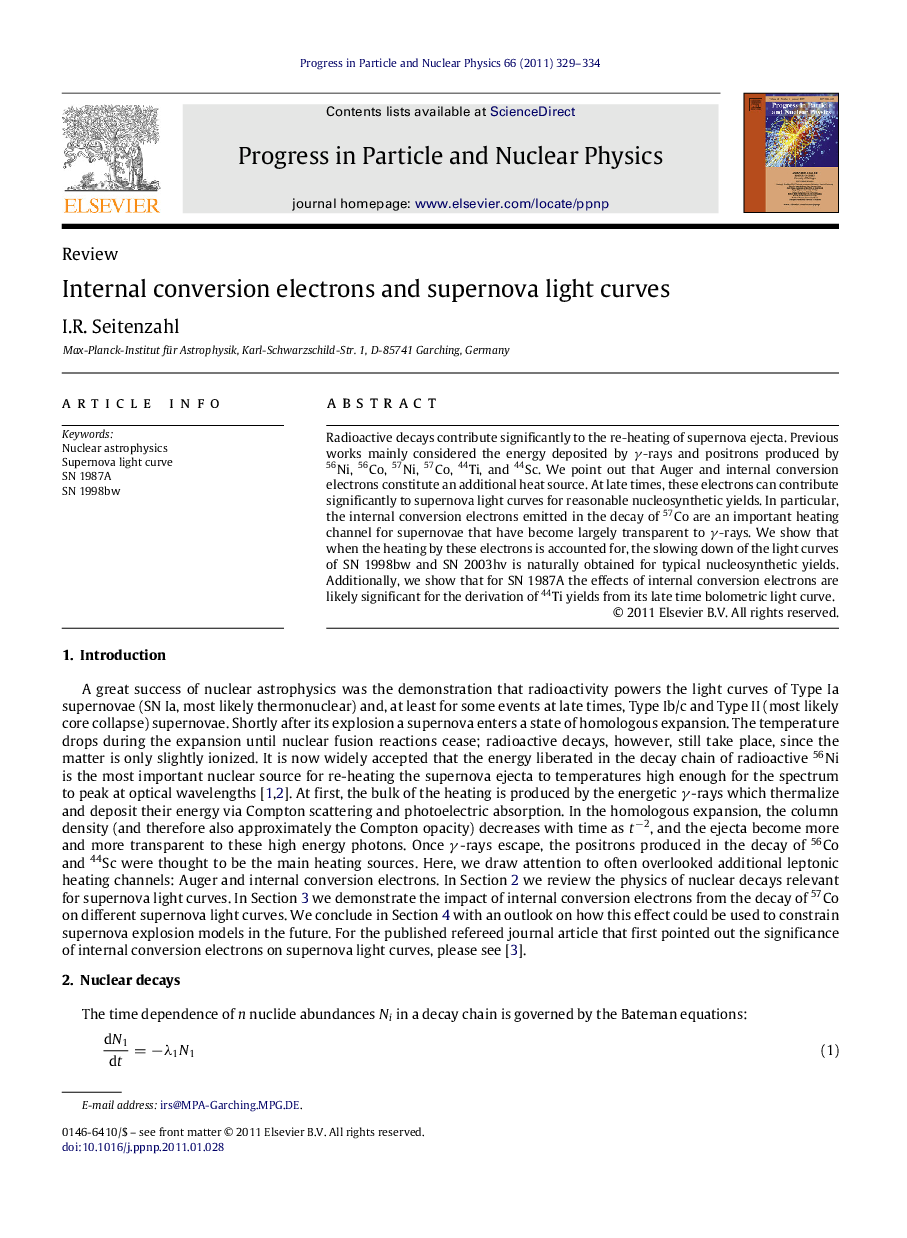| Article ID | Journal | Published Year | Pages | File Type |
|---|---|---|---|---|
| 1854521 | Progress in Particle and Nuclear Physics | 2011 | 6 Pages |
Radioactive decays contribute significantly to the re-heating of supernova ejecta. Previous works mainly considered the energy deposited by γγ-rays and positrons produced by 56Ni, 56Co, 57Ni, 57Co, 44Ti, and 44Sc. We point out that Auger and internal conversion electrons constitute an additional heat source. At late times, these electrons can contribute significantly to supernova light curves for reasonable nucleosynthetic yields. In particular, the internal conversion electrons emitted in the decay of 57Co are an important heating channel for supernovae that have become largely transparent to γγ-rays. We show that when the heating by these electrons is accounted for, the slowing down of the light curves of SN 1998bw and SN 2003hv is naturally obtained for typical nucleosynthetic yields. Additionally, we show that for SN 1987A the effects of internal conversion electrons are likely significant for the derivation of 44Ti yields from its late time bolometric light curve.
